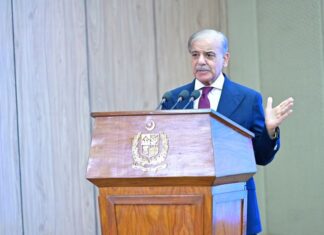Pakistan’s economy remains fragile in the face of external shocks, according to according to a report by BMI, a Fitch Solutions company.
The research, titled ‘Pakistan Country Risk Report,’ stated that limited fiscal buffers and vulnerabilities highlighted by the World Bank’s latest Crisis Preparedness Gap Analysis pose significant risks. Political instability could derail economic recovery, with the potential for protests and disruptions to economic activity.
BMI forecasted that Pakistan’s GDP growth is projected to reach 3.2% in the fiscal year FY2024-25. It presented somehow an optimistic view following a staff-level agreement with the International Monetary Fund (IMF).
“We remain more optimistic than most analysts about Pakistan, and we hold an above-consensus view that GDP will expand by 3.2% in FY2024-25,” the report stated.
Despite slightly weaker growth than anticipated at the start of 2024, recent figures confirm the expectation of economic recovery following the 2023 floods.
Preliminary government data indicates the economy expanded by 2.4% in FY2023-24, surpassing the 1.8% consensus forecast collected by Focus Economics. BMI attributes its optimistic outlook for FY2025 to three key factors: agricultural growth, lower inflation, and policy easing.
First, the report expects the vital agriculture sector to continue its recovery. The 2023 floods significantly disrupted agricultural activity, impacting a country where 40% of the population works in agriculture. However, grain production rebounded in 2024, and favourable conditions are anticipated for the 2025 harvest year. Although cotton production is expected to decline slightly, it will still be the second-largest harvest since 2019.
BMI was of the view that strong output in the agricultural sector will boost exports, support, rural incomes, and help to contain inflation. Meanwhile, easing foreign exchange shortages will allow an increase in ginning and other processing activities.
Second, BMI predicts a sharp easing of inflation, falling from 11.8% year-on-year in May 2024 to 6.2% by December 2024. This reduction will partly result from improved agricultural production and a stable exchange rate, which will mitigate inflationary pressures. The disinflation is expected to boost consumer spending growth from 2.6% in FY2023-24 to 3.4% in FY2024-25.
Third, BMI forecasts policy easing in late 2024 and into 2025. With slowing inflation, the State Bank of Pakistan (SBP) is likely to reduce the key policy rate from 20.5% in June 2024 to 16.00% by December 2024, and further to 14.00% by December 2025. However, fiscal policy will continue to tighten.
Despite these positive indicators, Pakistan’s fragile political situation could derail the economic recovery. “Given that 40% of Pakistanis work in agriculture, another flood or drought would also pose a significant risk to the economy,” it said.























